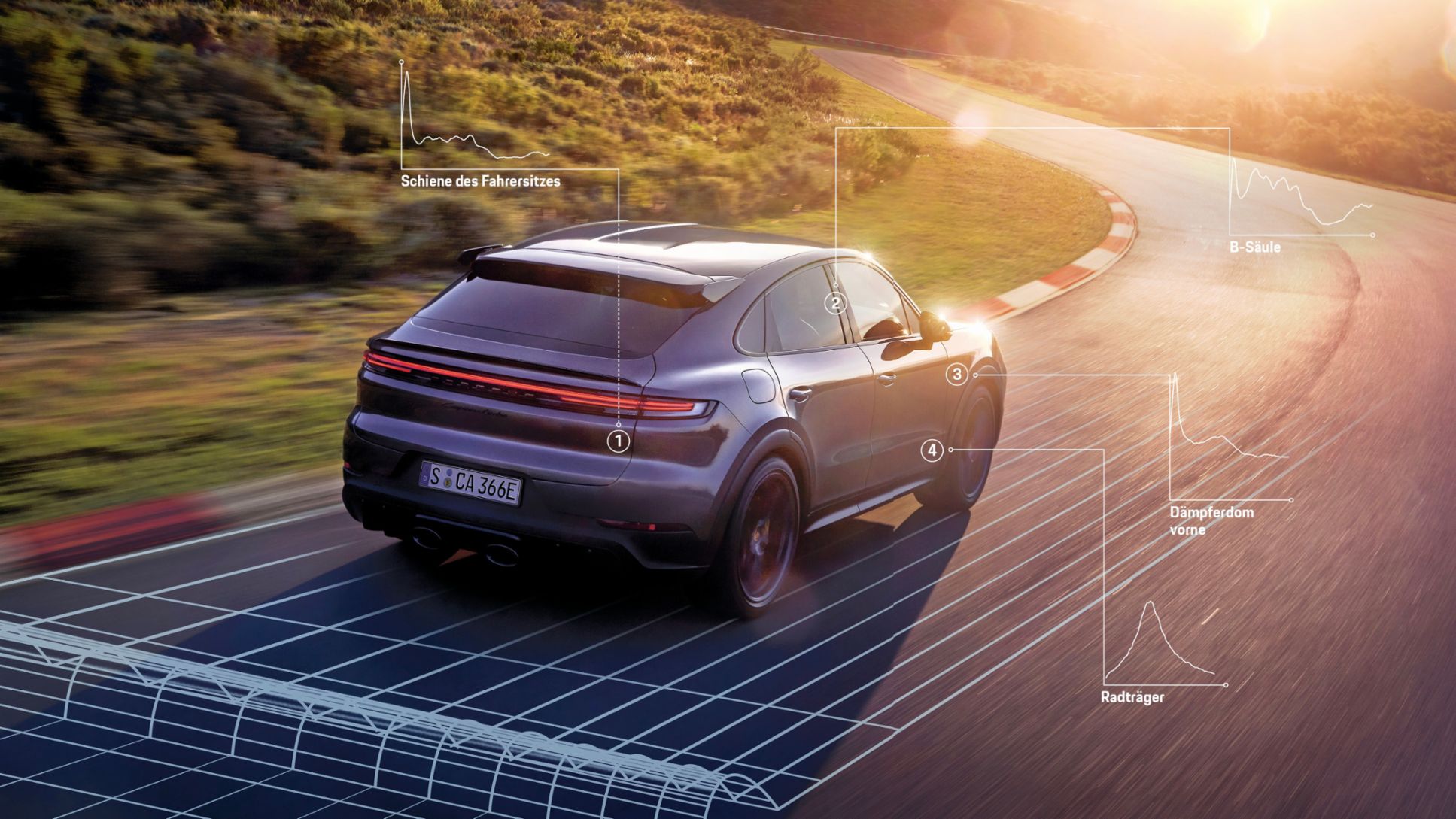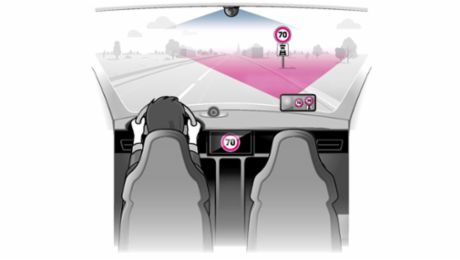Many criteria characterize a good car. Driving comfort plays a key role in this—both the decision to buy a particular model and subsequent customer satisfaction are decisive, among other things. For this reason, before a new vehicle is launched on the market, manufacturers carry out numerous driving comfort tests. Porsche Engineering also undertakes testing and tuning on behalf of OEMs, in the course of which the engineers responsible for vehicle dynamics tune the vehicles in accordance with the manufacturer’s specifications.
“Our aim is to optimize certain characteristics such as comfort or sportiness and bring them up to a level that has been defined together with our customer,” reports Martin Reichenecker, Senior Manager Vehicle Dynamics & Validation at Porsche Engineering.
At certain milestones, joint acceptance drives are conducted in which project managers and other employees who are not directly involved in chassis development sit at the wheel and gain an idea of the current status. This includes, for example, model line or project managers and the customer’s managers. Characteristics such as vertical body motion, the rollling behavior of the vehicle, the reaction when driving over a curb, as well as shaking and wheel bounce are evaluated. Chassis vibrations below 35 hertz are particularly relevant for the perception of comfort.
However, the assessments are always slightly different depending on the driver and their technical expertise, as their personal preferences and experiences can vary greatly. “One person may prefer a tight setup, while another appreciates a soft suspension. For this reason, we have developed an AI-based driving- comfort evaluator that can aid us in the preparation of acceptance drives,” explains Emmanuel Bogner, Vehicle Dynamics Expert at Porsche Engineering. “It can provide assessments regarding the current state of the chassis setup, which we can compare with the specified goals of our customer.”
At the beginning of the project, Bogner and his team investigated whether an AI is even capable of assessing driving comfort in a similar way to a human being. The challenge here is that many factors are involved in human perception of driving comfort, and it is important to link this subjective assessment with objective measurement data.
As a first step, the developers equipped a vehicle with six precision acceleration sensors that recorded the dynamic behavior of the chassis during numerous test drives on the 850-meter comfort track at the Porsche testing grounds in Weissach. The circuit offers many different road condition scenarios and thus enables a great deal of variance to be produced in the measurement data. “There are both long-wave and short-wave excitations created by the road surface there, so both low and high frequencies could be measured during the test drives,” says Bogner. “In addition to the sensors, I evaluated the driving comfort from my personal point of view.”
The measured values plus Bogner’s assessments served as the basis for training a neural network. First, the measured acceleration values from the sensors were converted into a frequency spectrum using a Fourier transform. This made it easy to see the areas that had been subject to particularly strong vibrations during the drive. This frequency spectrum then served as an input signal for the neural network. In numerous training loops, it learned to establish an ever-better connection between the patterns at its input and Bogner’s assessments. “After training, the AI was actually able to evaluate driving comfort,” says Bogner.
Optimized Sensor Set-Up
After that, Bogner and his team began optimizing the measurement technology setup to further increase the speed and efficiency of the measurements. The original precision sensors that were used could only be integrated into the vehicle with great effort and required a lengthy calibration process. In addition, these types of sensors can also be used for high-frequency acoustic measurements: Their measuring range extended to a frequency of up to 100,000 hertz, while in the driving-comfort evaluation context, vibrations below 35 hertz are taken into account. As an alternative, the team used cheaper sensors from motorsport applications and checked whether the results were still good enough for driving-comfort evaluation. “We managed with four sensors, attached to the driver’s seat rail, the B-pillar, the suspension strut, and the wheel carrier,” explains Bogner. “New test drives showed that the optimized setup actually provided sufficiently good measurement data for AI-based driving-comfort evaluation.”

Currently, the neural network receives twelve input values from the vibration sensors and returns a table with ten parameters that describe the behavior of the chassis as a result. “The AI-based driving-comfort evaluator runs on a normal PC; you don’t need a high-performance computer,” says Bogner. “The training lasts a maximum of one day, while the evaluation of a test drive is completed after just a few minutes.” Until now, only Bogner provided training data for the neural network as a human evaluator; in the future, additional experienced employees will contribute their input together with measurement data from other vehicles in order to further train the network and improve the results. “Unlike with the acceptance tests, there should be only a few deviations in the subjective assessments, because the opinions of the professionals usually coincide,” says Bogner.

In addition to preparing acceptance drives, Bogner and his team have another goal: In the future, the aim is for vehicles to calibrate themselves using the AI-based driving-comfort evaluator. “You could put them on a test bench and drive the same road again and again,” explains Reichenecker.
“In an iterative process, the chassis parameters could then be optimized until the comfort measured with the AI-based driving-comfort evaluator matches the customer specifications. This could be done fully automatically and without a driver.” Another new option would be the use of the AI-based driving-comfort evaluator in series-production vehicles. There, it could continuously monitor the comfort and performance of the chassis during vehicle use. The AI-based driving-comfort evaluator could therefore be used not only as a development tool to enable faster calibration of the chassis—it would also be an intelligent passenger of the end customer, ensuring a consistently high level of comfort and greater safety on the road.
Info
Text first published in the Porsche Engineering Magazine, issue 2/2024.
Text: Christian Buck
Copyright: All images, videos and audio files published in this article are subject to copyright. Reproduction in whole or in part is not permitted without the written consent of Dr. Ing. h.c. F. Porsche AG. Please contact newsroom@porsche.com for further information.



